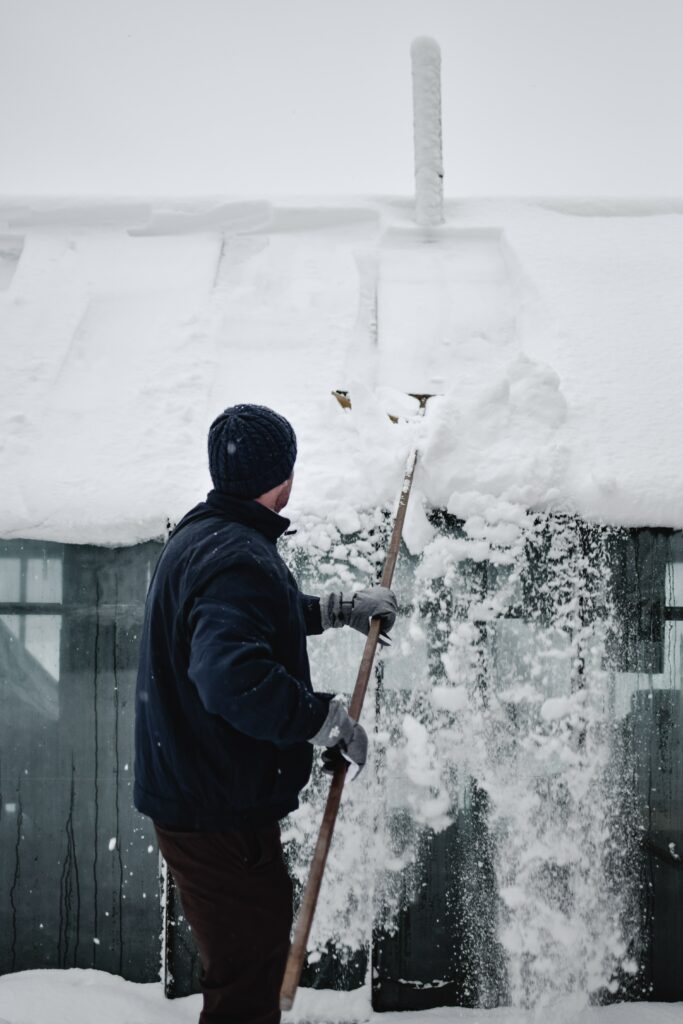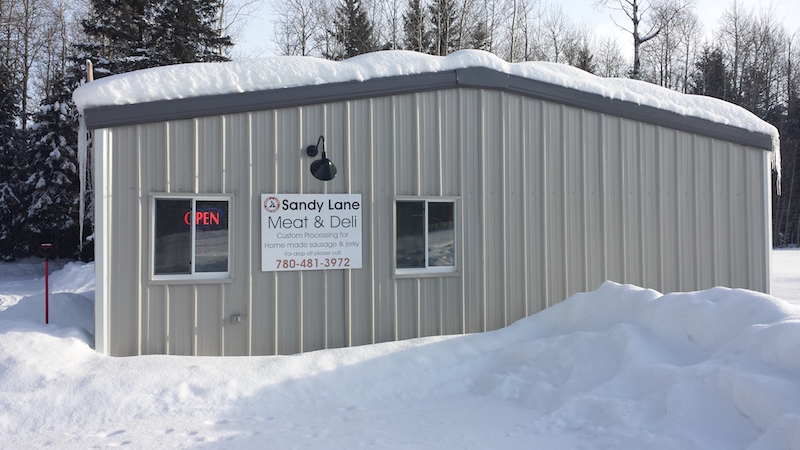Snow and ice are well-known to cause slippery roads and hazardous driving conditions during the cold winter months. However, steel buildings and their roofs can also be impacted by large amounts of snow, ice, and cold temperatures. Knowing how snow or ice may impact your steel building or roof is important to protect the safety and longevity of your building.
Snow Load
Snow load is when the accumulation of snow and ice become heavy, creating weight on top of the building’s roof. Even though many buildings, such as a warehouse or distribution center, are built to be durable and last many years, the heavy weight of snow and ice can impact the integrity of the building’s roof. If the snow and ice become heavier than what the roof is built to manage, then even well-constructed roofs can collapse under the pressure.
Calculating Snow Load
It is extremely important to understand how much snow that your building’s roof is meant to undertake. This can not only prevent damage to the building leading to expensive repair costs, but also prevent injuries of workers within and around the building. Understanding the amount of weight your roof is meant to withstand will help you make sure that the snow load does not exceed an acceptable limit.
Many different factors impact the amount of weight your building is meant to withstand on its roof. Most roofs can carry snow of up to 20 pounds per square foot. However, when calculating the snow load of your building, it is important to take into effect the weight and depth of the snow. Multiplying these two variables together will reveal the amount of weight from snow on the roof. For example, if the snow weighs 5 pounds per cubic foot and there is 1 foot on the roof, each square foot is equivalent to 5 pounds of pressure. However, understanding how much snow weighs can be difficult.
Factors Affecting Snow Load
Density: Density of the snow impacts the pressure per cubic foot. Even if the same number of inches of snow is on the roof, the weight can vary depending on how densely the snow is packed. A foot of packed snow or ice will cause a greater weight and load than a foot of light, fluffy snow.
Ice is the heaviest, most dense form of snow and can weigh up to 57 pounds per square foot. Packed snow with ice is also quite heavy, weighing between 40 and 57 pounds per square foot. Packed snow is lighter, but can still exert a significant amount of pressure at 20-40 pounds per square foot. Light snow will range from 5 to 20 pounds per square foot.
In the United States, snow that falls on the East Coast, Southwest Alaska, and the Pacific Northwest tends to be heavy and wet. In the western side of the country, however, snow tends to be lighter and fluffy. As a result, building in areas where snow tends to fall heavy should be extra cautious about the amount of snow on their roofs.
Accumulation: The accumulation, or the rate and amount of snow that falls, can also have a significant impact on snow load. Temperature can have a great impact on how much snow will accumulate on top of a building, as well as the density of snow that is left behind.
When temperatures warm, it melts the snow. If temperatures are warm enough to melt a significant amount of snow, then the accumulation will be reduced, resulting in a smaller load on the roof. However, if temperatures warm slightly and then freeze, the cold air helps to build ice on the roof. Additional accumulation can be problematic on top of the ice, as the load becomes heavier.
Several days of cold weather with significant snowfall can also be problematic as it does not allow for snow to melt or accumulation to be reduced. As snow continues to build, the pressure on the roof begins to build as well. This can become problematic quickly, even if the snow has a low density and light.
Because snow accumulation and temperatures can change quickly, it is important to closely track the amount of snow and type of snow on the roof. Because ice and dense snow are heavier than snow with a low density, it is important to monitor the types of snow on the roof as well as the rate at which snow is falling. A quick snowfall can lead to fast accumulation, resulting in a shorter period of time for removal of the snow from the roof.
Snow Distribution: Due to wind and the slope of the roof, snow often accumulates in different depths on different parts of a roof. This can leave certain areas of the roof more structurally sound than others. Keep a close look out for areas where the snow has accumulated deeply on a specific part of the roof, as this can impact the roof’s structural integrity.
Drifting snow is a result of wind pushing snow from one area to another. Large swells of snow may be especially common along equipment on the roof or penetrations, causing a greater accumulation. In places where the snow drifts, a greater amount of snow is present with a greater weight.
Sliding snow may be caused by the slope of the roof. Snow may slide from the top of the roof closer to the bottom. As snow slides, it may become more tightly packed together, resulting in a greater density and exerting more pressure on that portion of the roof.
If sliding snow lands on an overhang or porch area, it can easily become stuck, exerting a great amount of pressure on a small area. Areas where snow has accumulated significantly may be vulnerable to collapse or damage.
Snow that slides and falls from the roof can also be hazardous in different ways. If there are people or objects present beneath the snow fall, they can easily become injured or damaged from the weight of the snow falling on them. Additionally, force created by the falling snow may displace rooftop equipment or materials, causing them to fall below.
If you’re looking for a solution to prevent snow from sliding on roof tops, snow guards can help protect your roof and the people below. It is important to choose a snow guard to best match your roofing and install it properly, so consider working with the manufacturer and a contractor to ensure a smooth process.
How to Manage Snow Loads

Photo by Eva Elijas from Pexels
If you’re concerned about your facility’s roof, whether it is a manufacturing facility or warehouse, design can impact your building’s ability to manage snow loads. For more information, contact your local representative at Allied Steel Buildings to discuss strategies to increase your building’s snow load or reduce the possibility of damage from heavy snow.

